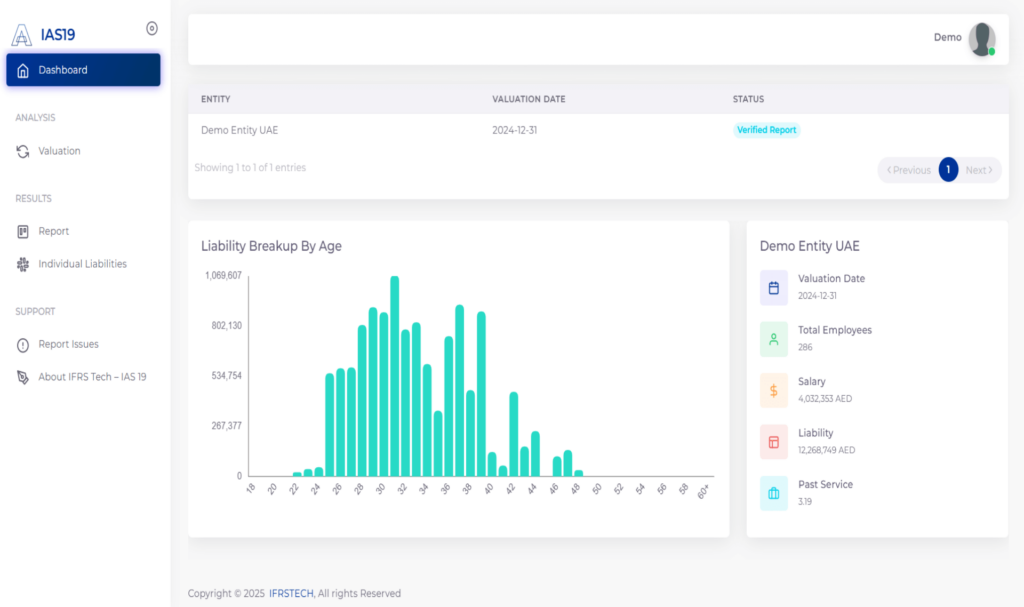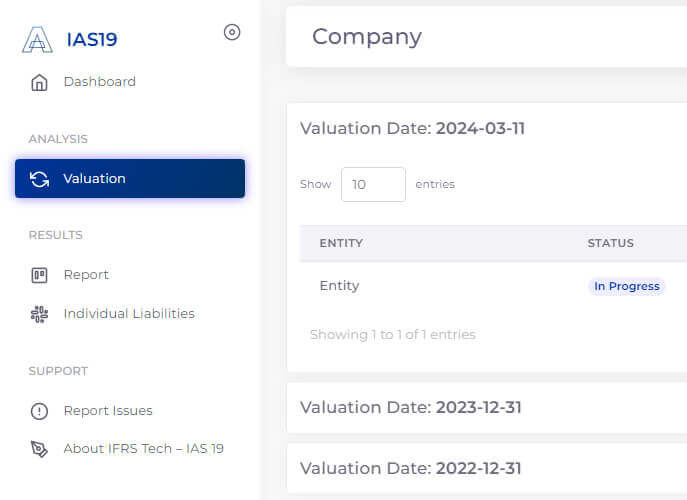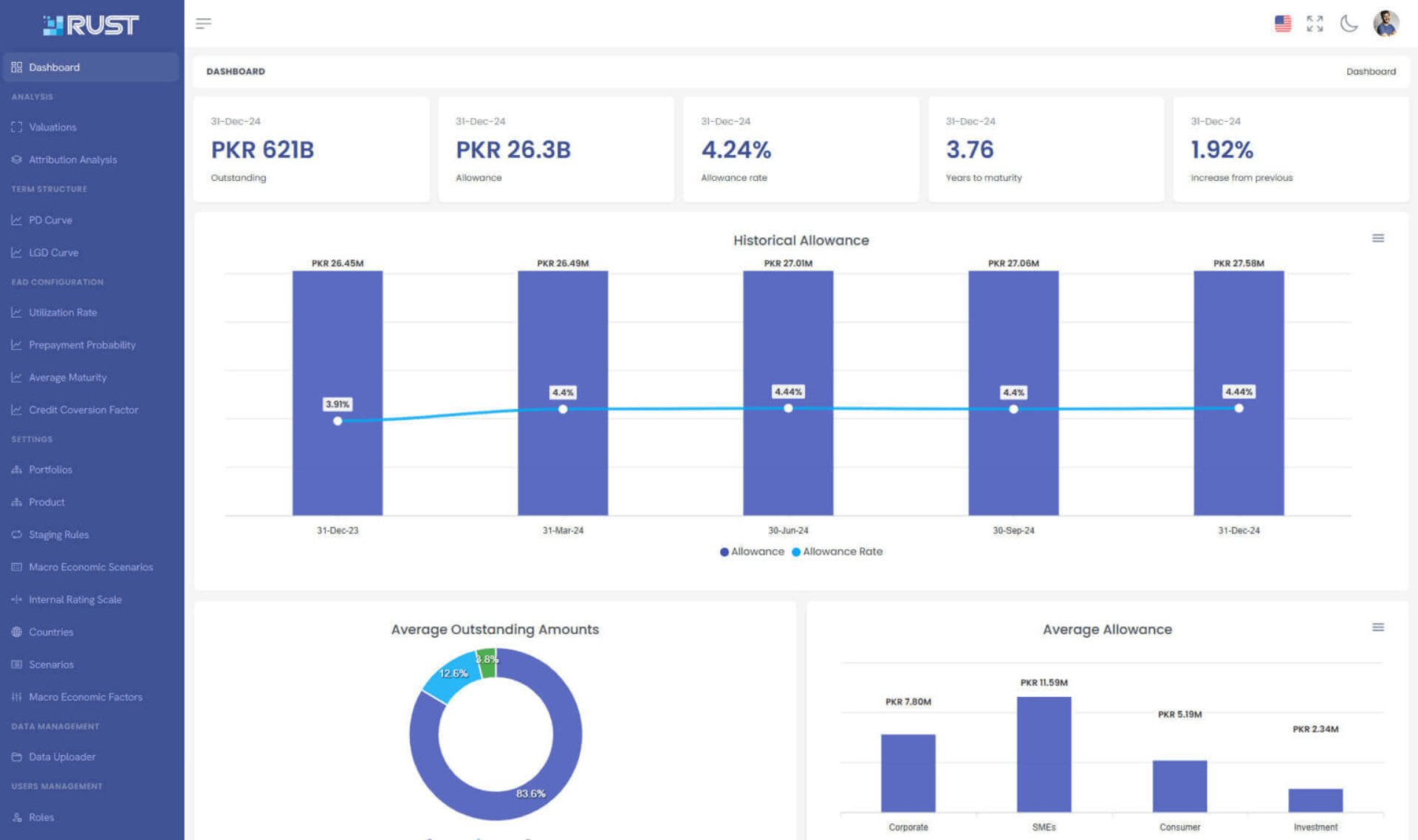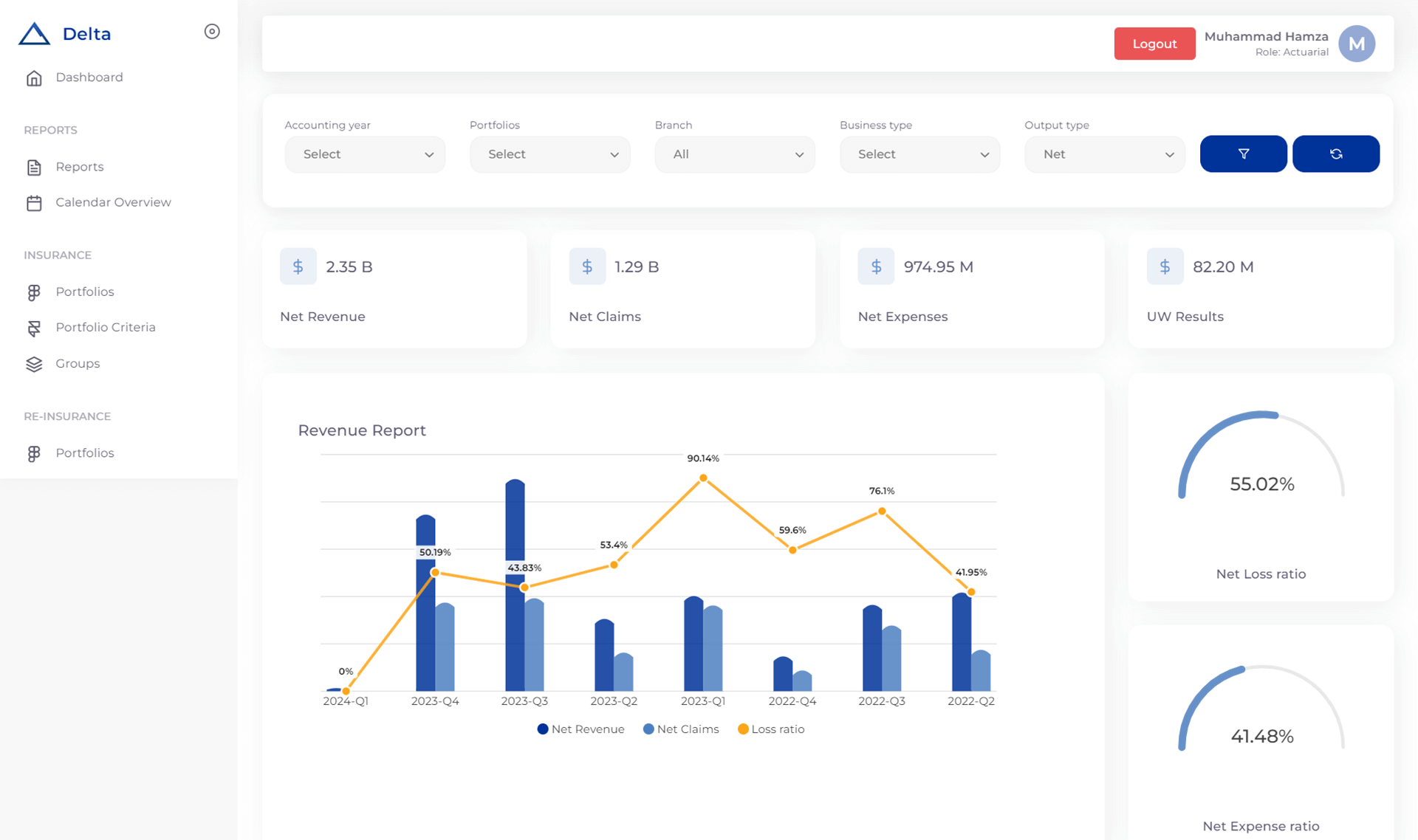- +966 55 091 9817
- [email protected]
- 7500, AL-Badar, 2900, Al-Khobar, KSA
Simplify employee benefits valuations with the IAS 19 Valuation Tool ensuring compliance, accuracy, and secure data management.

A dedicated team of experienced actuaries and accountants supports every step of the IAS 19 valuation, from initial assessment to final reporting, ensuring accurate and compliant valuations.
This support provides peace of mind and confidence in managing complex employee benefits obligations.
Built on Oracle Cloud Services, our platform ensures compliance with PDPL and CITC regulations in Saudi Arabia and full operability across UAE and Pakistan.
This adaptability makes it an ideal solution for IAS 19 compliance across regions, offering flexibility and scalability.
he IAS 19 Valuation Tool provides robust security, protecting sensitive employee data in-house without external consultants.
This high level of data control safeguards confidentiality and reliability, aligning with global best practices for data protection.
Our tool supports IAS 19, AASB 119, and FAS 87 standards, enabling accurate, global actuarial valuations for comprehensive benefit reporting.
With this suite, users gain confidence that their reporting aligns with evolving global regulatory requirements.
Streamline valuations that used to take months into minutes with the IAS 19 Valuation Tool.
Users can upload data, set actuarial assumptions, and generate compliant reports almost instantly, enhancing productivity and simplifying operations.
Our tool adheres to local labor laws in Saudi Arabia, UAE, and Pakistan, guaranteeing compliance with each country's regulatory standards.
This customization keeps your IAS 19 valuations accurate, efficient, and adaptable to regional legal changes.
Automate actuarial assumptions based on detailed demographic profiling, enabling precise, reliable valuations without external inputs.
By reducing manual inputs, this feature also minimizes the risk of human error in complex calculations.
Quickly generate fully signed actuarial reports that integrate smoothly into financial statements.
This feature enhances accuracy and reliability in financial reporting, promoting transparency and simplifying the audit process.
Effortlessly manage valuations for employee benefits like gratuity and EOSB, ensuring compliance with regulatory standards. This tool streamlines the process, making complex valuations straightforward, accurate, and cost-effective.
Access comprehensive reports that provide data-driven insights on employee benefits, financial strategies, and actuarial assumptions.
These reports support informed decision-making that aligns with long-term financial objectives.
Achieve precise calculations for defined benefit obligations, asset plans, and various employee benefits, enabling dependable financial reporting.
Accuracy in these valuations strengthens both internal insights and external compliance.
Fully compliant with PDPL, CITC, and IAS 19 standards, the tool provides assurance that all calculations meet regulatory requirements.
This adherence minimizes risk and ensures peace of mind in your financial reporting.
Retain exclusive control over sensitive employee and financial data, prioritizing privacy and security at all stages.
This data control aligns with best practices in safeguarding employee information during valuations.
Conduct valuations in-house, reducing the need for third-party consultants and maintaining privacy and control over sensitive data.
This operational independence enhances both security and efficiency for enterprises.
Generate actuarial reports instantly, eliminating traditional waiting periods for valuations.
This immediacy enhances efficiency, allowing timely adjustments in financial planning for employee benefits.
Run valuations multiple times at no extra charge, making it easier to adjust calculations for precise financial reporting.
This feature supports consistent accuracy in reporting, which is essential for meeting evolving IAS 19 compliance needs.























IAS 19 compliance ensures that organizations accurately report employee benefits in their financial statements, including pensions and long-term obligations. By following IAS 19, companies meet global accounting standards, maintain transparency in their employee benefits accounting, and align with regulatory requirements.
Our IAS 19 Valuation Tool automates essential actuarial calculations, demographic analysis, and comprehensive reporting. This automation reduces human error, enhances accuracy, and ensures strict adherence to IAS 19 standards, offering a reliable solution for organizations focused on compliance and precision in employee benefits accounting.
Yes, the IAS 19 Valuation Tool is highly adaptable and can be tailored to specific industry requirements in finance, healthcare, retail, or any other sector. This flexibility ensures accurate and relevant valuations based on industry-specific needs and helps companies maintain compliance across diverse applications.
Absolutely. Our tool is built with advanced security protocols to protect all user data, including sensitive employee information. We adhere to the highest confidentiality and compliance standards, ensuring your data is safe from unauthorized access while enabling secure and efficient financial reporting.
IAS 19 calculations for employee benefits involve a multi-step actuarial approach:
IAS 19 provides a comprehensive framework for accounting treatments of employee benefits. It covers short-term benefits, post-employment benefits, other long-term benefits, and termination benefits. For instance, short-term benefits due at period-end should be accrued, ensuring all obligations are accurately reflected in financial reports.
While IFRS 17 focuses on insurance contracts, IAS 19 is dedicated to employee benefits accounting, including pensions and other post-employment benefits. IFRS 17 excludes employee benefits (covered by IAS 19) and share-based payments (covered by IFRS 2). This distinction ensures that each standard addresses its respective financial obligations accurately.
Pricing reflects the market-determined cost of an asset based on current supply and demand. In contrast, valuation is an actuarial calculation that estimates the present value of future benefits or obligations, consolidating expected cash flows to determine a single economic value for planning and reporting.
IAS 19 valuation involves determining the value of defined benefit obligations using actuarial assumptions. This includes both financial factors, such as discount rates, and demographic factors, like employee turnover. Management’s best estimates, informed by market data and historical patterns, guide these assumptions for accurate employee benefits valuations.
IAS 19 was initially issued in 1998 and later revised in 2011. Effective January 1, 2013, the updated version introduced substantial changes, particularly in the accounting for employee benefits, to enhance transparency, accuracy, and uniformity in financial reporting.
IAS 19 allows entities to recognize all actuarial gains and losses immediately or apply a ‘corridor’ approach, which defers recognition. This flexibility supports tailored financial reporting while adhering to established employee benefits accounting standards.
Pension valuation is an actuarial process that calculates the present value of future pension liabilities. It requires evaluating factors like the benefit formula and discount rates, enabling accurate financial reporting of pension obligations under IAS 19.
A comprehensive audit of an actuarial valuation includes ensuring complete and accurate data, particularly with critical details like dates of birth, joining dates, salary information, and leave balances. Any inaccuracies in these fields can impact the reliability of employee benefits valuations and IAS 19 compliance.
Our IAS 19 Valuation Tool allows for customized input of key actuarial assumptions, such as discount rates, salary growth, and employee turnover. This flexibility ensures that each valuation reflects the organization’s specific financial and demographic factors, aligning with IAS 19 compliance requirements.
Yes, the tool generates detailed, compliant IAS 19 disclosures that integrate seamlessly with financial statements. These disclosures include information on defined benefit obligations, plan assets, and actuarial assumptions, helping organizations meet regulatory transparency standards.
IAS 19 addresses various employee benefits, including short-term benefits, post-employment benefits (like pensions), long-term employee benefits, and termination benefits. Our tool provides structured support to manage all these categories, streamlining compliance with IAS 19.
The tool includes functionality for sensitivity analysis, allowing organizations to assess how changes in assumptions (such as discount rates or salary growth) impact employee benefit liabilities. This feature provides valuable insights into potential financial risks and enhances strategic planning.
Yes, our IAS 19 Valuation Tool is designed to accommodate both small businesses and large enterprises. It offers scalable solutions that simplify employee benefits valuations, making it ideal for organizations of all sizes seeking compliance with IAS 19 standards.
Loss Given Default (LGD) in IFRS 9 refers to the proportion of a loan that would not be recovered if the borrower defaults. This is a crucial element in Expected Credit Loss (ECL) calculations, as it helps institutions quantify potential losses and adjust risk models accordingly.
The tool guides users through setting up accurate actuarial assumptions, such as mortality rates, discount rates, and employee turnover. By ensuring these assumptions are consistently applied, the tool supports precise, compliant valuations for employee benefit plans.
Our IAS 19 Valuation Tool automates complex calculations and data entry processes in employee benefits valuations, allowing organizations to produce timely, accurate reports that comply with IAS 19 standards. This streamlines financial reporting and reduces administrative burden.
Automation reduces manual errors, improves data accuracy, and enhances efficiency. By automating valuations for employee benefit plans, our tool enables organizations to stay compliant with IAS 19 while saving time and resources on routine accounting tasks.